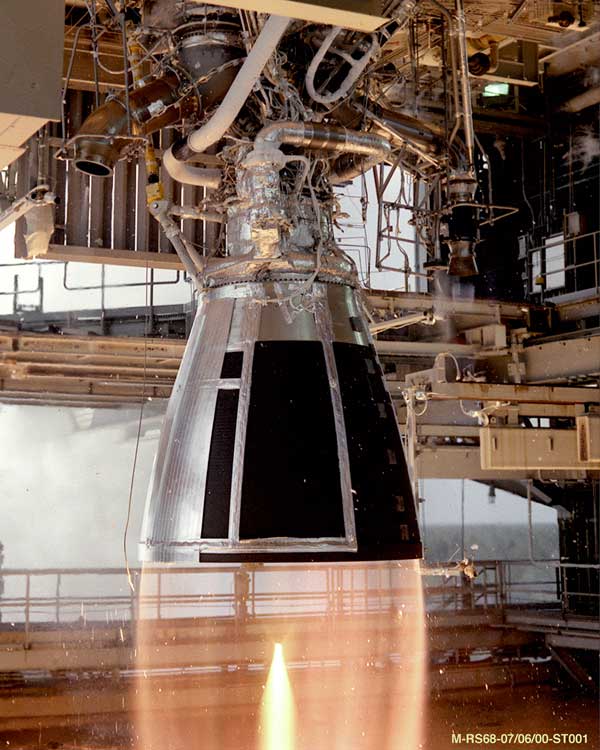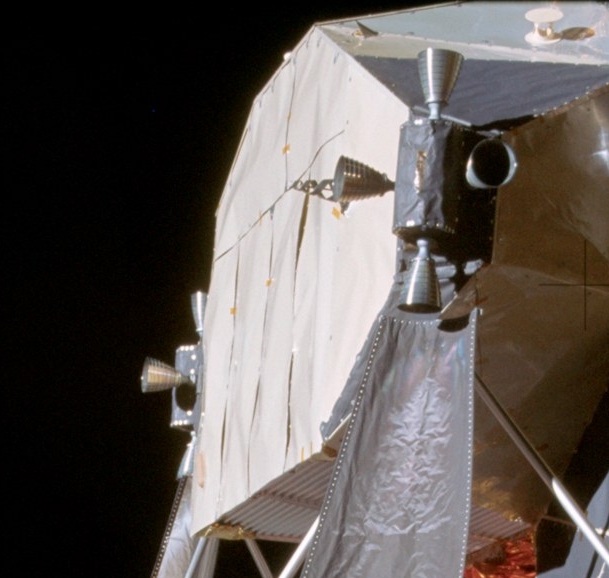|
KDU-414
The KDU-414 (''Russian Корректирующая Двигательная Установка'', Corrective Propulsion Unit), is a pressure-fed liquid rocket Propulsion Unit developed and produced by the Isayev Design Bureau (today known as KhimMash). From 1960 onward, it powered several unmanned Soviet Spacecraft, including the first series of Molniya satellites, several Kosmos satellites as well as the space probes Mars 1, Venera 1, Zond 2 and Zond 3, featured as a part of standardized spacecraft buses known as KAUR-2, 2MV and 3MV. The Corrective Propulsion Unit consists of a single chamber 'S5.19' liquid rocket engine and a conical thermal protection cowl containing the spherical propellant tank. A barrier splits the tank into two separate compartments, filled with the propellant, UDMH, and the oxidizer, IRFNA, respectively. This combination of propellants is hypergolic A hypergolic propellant is a rocket propellant combination used in a rocket engine, whose comp ... [...More Info...] [...Related Items...] OR: [Wikipedia] [Google] [Baidu] |
KAUR (satellite Bus)
The KAUR (Russian: , Universal Spacecraft Series) program was a series of satellite buses designed and manufactured by ISS Reshetnev (then NPO PM). Its design is based on a pressurized bus originally developed in the 1960s and has been used from low Earth Orbit to medium Earth orbit and even to GEO. It has four different generations and its different versions have been used from civilian communications to satellite navigation. Generations In total, 4 satellite platform generations were developed: KAUR-1, -2, -3 and -4. From 1965 to 2009, more than 400 communications satellites, both military and civilian, were built on the basis of these platforms and their upgraded versions. KAUR-1 The KAUR-1 was a pressurised cylinder with a diameter of 2 m, length of 3 m and weighed 800 kg. It had no propulsion system, and instead used a passive single-axis magneto-gravity stabilisation system. The KAUR-1 bus became the basis for a series of navigation and related satellites built by OKB-10, ... [...More Info...] [...Related Items...] OR: [Wikipedia] [Google] [Baidu] |
Venera 1
''Venera 1'' ( meaning ''Venus 1''), also known as Venera-1VA No.2 and occasionally in the West as ''Sputnik 8'', was the first spacecraft to perform an interplanetary flight and the first to fly past Venus, as part of the Soviet Union's Venera programme. Launched in February 1961, it was intended as an impactor, but flew past Venus on 19 May of the same year; however, radio contact with the probe was lost before the flyby, resulting in it returning no data. Spacecraft ''Venera 1'' was a probe consisting of a cylindrical body in diameter topped by a dome, totalling in height. This was pressurized to with dry nitrogen, with internal fans to maintain even distribution of heat. Two solar panels extended from the cylinder, charging a bank of silver-zinc batteries. A parabolic wire-mesh antenna was designed to send data from Venus to Earth on a frequency of 922.8 MHz. A antenna boom was used to transmit short-wave signals during the near-Earth phase of the mission. Semid ... [...More Info...] [...Related Items...] OR: [Wikipedia] [Google] [Baidu] |
Aleksei Isaev
Aleksei Mikhailovich Isaev (also Isayev; Russian: Алексе́й Миха́йлович Иса́ев; October 24, 1908, in Saint Petersburg – June 10, 1971, in Moscow) was a Soviet engineer in the Soviet space program, working on rocket combustion and propellant. Aleksei Isaev began work under Leonid Dushkin during World War II, on an experimental rocket-powered interceptor plane, the BI-1. In 1944 he formed his own design bureau to engineer liquid-propellant engines. After abandoning the heavy, complex and undercooled German engine designs, Russia's principal engine designer Valentin Glushko turned to Isaev's innovations: thin-walled copper combustion chambers backed by steel support, anti-oscillation baffle to prevent chugging, and the flat injector plate with mixing-swirling injectors. The latter was an enormous simplification of the "plumbing nightmare" of the V-2 engine, because it avoided the need for separate fuel lines to each sprayer. Staged combustion (За ... [...More Info...] [...Related Items...] OR: [Wikipedia] [Google] [Baidu] |
Soviet Union
The Union of Soviet Socialist Republics. (USSR), commonly known as the Soviet Union, was a List of former transcontinental countries#Since 1700, transcontinental country that spanned much of Eurasia from 1922 until Dissolution of the Soviet Union, it dissolved in 1991. During its existence, it was the list of countries and dependencies by area, largest country by area, extending across Time in Russia, eleven time zones and sharing Geography of the Soviet Union#Borders and neighbors, borders with twelve countries, and the List of countries and dependencies by population, third-most populous country. An overall successor to the Russian Empire, it was nominally organized as a federal union of Republics of the Soviet Union, national republics, the largest and most populous of which was the Russian SFSR. In practice, Government of the Soviet Union, its government and Economy of the Soviet Union, economy were Soviet-type economic planning, highly centralized. As a one-party state go ... [...More Info...] [...Related Items...] OR: [Wikipedia] [Google] [Baidu] |
Rocket Engines Using Hypergolic Propellant
A rocket (from , and so named for its shape) is a vehicle that uses jet propulsion to accelerate without using any surrounding air. A rocket engine produces thrust by reaction to exhaust expelled at high speed. Rocket engines work entirely from propellant carried within the vehicle; therefore a rocket can fly in the vacuum of space. Rockets work more efficiently in a vacuum and incur a loss of thrust due to the opposing pressure of the atmosphere. Multistage rockets are capable of attaining escape velocity from Earth and therefore can achieve unlimited maximum altitude. Compared with airbreathing engines, rockets are lightweight and powerful and capable of generating large accelerations. To control their flight, rockets rely on momentum, airfoils, auxiliary reaction engines, gimballed thrust, momentum wheels, deflection of the exhaust stream, propellant flow, spin, or gravity. Rockets for military and recreational uses date back to at least 13th-century China. Significan ... [...More Info...] [...Related Items...] OR: [Wikipedia] [Google] [Baidu] |
Rocket Engines
A rocket engine is a reaction engine, producing thrust in accordance with Newton's third law by ejecting reaction mass rearward, usually a high-speed Jet (fluid), jet of high-temperature gas produced by the combustion of rocket propellants stored inside the rocket. However, non-combusting forms such as cold gas thrusters and nuclear thermal rockets also exist. Rocket vehicles carry their own oxidiser, unlike most combustion engines, so rocket engines can be used in a vacuum, and they can achieve great speed, beyond escape velocity. Vehicles commonly propelled by rocket engines include missiles, Rocket-assisted projectile, artillery shells, ballistic missiles and rockets of any size, from tiny Rocket (firework), fireworks to Rocket (weapon), man-sized weapons to huge Space vehicle, spaceships. Compared to other types of jet engine, rocket engines are the lightest and have the highest thrust, but are the least propellant-efficient (they have the lowest specific impulse). The ideal ... [...More Info...] [...Related Items...] OR: [Wikipedia] [Google] [Baidu] |
KB KhimMash Rocket Engines
KB, kB or kb may stand for: Businesses and organizations Banks * KB Kookmin Bank, South Korea * Kaupthing Bank, Iceland * Komerční banka, Czech Republic * Kasikornbank, Thailand * Karafarin Bank, Iran Libraries * National Library of Sweden () * National Library of the Netherlands () Sport * Kalix BF, a Swedish bandy club * Kjøbenhavns Boldklub, a sports club, Copenhagen, Denmark Other businesses and organizations * KB Home, a US house builder * KB Lager, Australia * KB Toys, US * K&B, a New Orleans, Louisiana, US drugstore * Druk Air (IATA code: ''KB''), Bhutan airline Entertainment * Kick Buttowski, an American animated series and titular character People * Kevin Bartlett (Australian rules footballer) (born 1947) * KB (rapper) (born 1988), Kevin Elijah Burgess * KB Killa Beats (born 1983), Zambian record producer * Kobe Bryant (1978–2020), American basketball player * Kyle Busch (born 1985), American stock car driver Science and technology Biology * K ... [...More Info...] [...Related Items...] OR: [Wikipedia] [Google] [Baidu] |
Gimbal
A gimbal is a pivoted support that permits rotation of an object about an axis. A set of three gimbals, one mounted on the other with orthogonal pivot axes, may be used to allow an object mounted on the innermost gimbal to remain independent of the rotation of its support (e.g. vertical in the first animation). For example, on a ship, the gyroscopes, shipboard compasses, stoves, and even drink holders typically use gimbals to keep them upright with respect to the horizon despite the ship's pitching and rolling. The gimbal suspension used for mounting compasses and the like is sometimes called a Cardan suspension after Italian mathematician and physicist Gerolamo Cardano (1501–1576) who described it in detail. However, Cardano did not invent the gimbal, nor did he claim to. The device has been known since antiquity, first described in the 3rd c. BC by Philo of Byzantium, although some modern authors support the view that it may not have a single identifiable inventor. His ... [...More Info...] [...Related Items...] OR: [Wikipedia] [Google] [Baidu] |
Reaction Control System
A reaction control system (RCS) is a spacecraft system that uses Thrusters (spacecraft), thrusters to provide Spacecraft attitude control, attitude control and translation (physics), translation. Alternatively, reaction wheels can be used for attitude control, rather than RCS. Use of diverted engine thrust to provide stable attitude control of a V/STOL, short-or-vertical takeoff and landing aircraft below conventional winged flight speeds, such as with the Hawker Siddeley Harrier#Controls and handling, Harrier "jump jet", may also be referred to as a reaction control system. Reaction control systems are capable of providing small amounts of thrust in any desired direction or combination of directions. An RCS is also capable of providing torque to allow control of rotation (aircraft principal axes, roll, pitch, and yaw). Reaction control systems often use combinations of large and small (vernier thruster, vernier) thrusters, to allow different levels of response. Uses Spacecr ... [...More Info...] [...Related Items...] OR: [Wikipedia] [Google] [Baidu] |
Nitrogen
Nitrogen is a chemical element; it has Symbol (chemistry), symbol N and atomic number 7. Nitrogen is a Nonmetal (chemistry), nonmetal and the lightest member of pnictogen, group 15 of the periodic table, often called the Pnictogen, pnictogens. It is a common element in the universe, estimated at Abundance of the chemical elements, seventh in total abundance in the Milky Way and the Solar System. At standard temperature and pressure, two atoms of the element chemical bond, bond to form N2, a colourless and odourless diatomic molecule, diatomic gas. N2 forms about 78% of Atmosphere of Earth, Earth's atmosphere, making it the most abundant chemical species in air. Because of the volatility of nitrogen compounds, nitrogen is relatively rare in the solid parts of the Earth. It was first discovered and isolated by Scottish physician Daniel Rutherford in 1772 and independently by Carl Wilhelm Scheele and Henry Cavendish at about the same time. The name was suggested by French chemist ... [...More Info...] [...Related Items...] OR: [Wikipedia] [Google] [Baidu] |
Hypergolic Propellant
A hypergolic propellant is a rocket propellant combination used in a rocket engine, whose components spontaneously ignite when they come into contact with each other. The two propellant components usually consist of a fuel and an oxidizer. The main advantages of hypergolic propellants are that they can be stored as liquids at room temperature and that engines which are powered by them are easy to ignite reliably and repeatedly. Common hypergolic propellants are extremely toxic or corrosive, making them difficult to handle. In contemporary usage, the terms "hypergol" and "hypergolic propellant" usually mean the most common such propellant combination: dinitrogen tetroxide plus hydrazine. History The fact that turpentine may spontaneously combust when mixed with nitric acid was discovered as early as the late 17th century by Frederick Slare, but it remained a scientific curiosity for centuries until it was proposed to use it for rocket-assisted take off during WWII. In 1935 ... [...More Info...] [...Related Items...] OR: [Wikipedia] [Google] [Baidu] |





